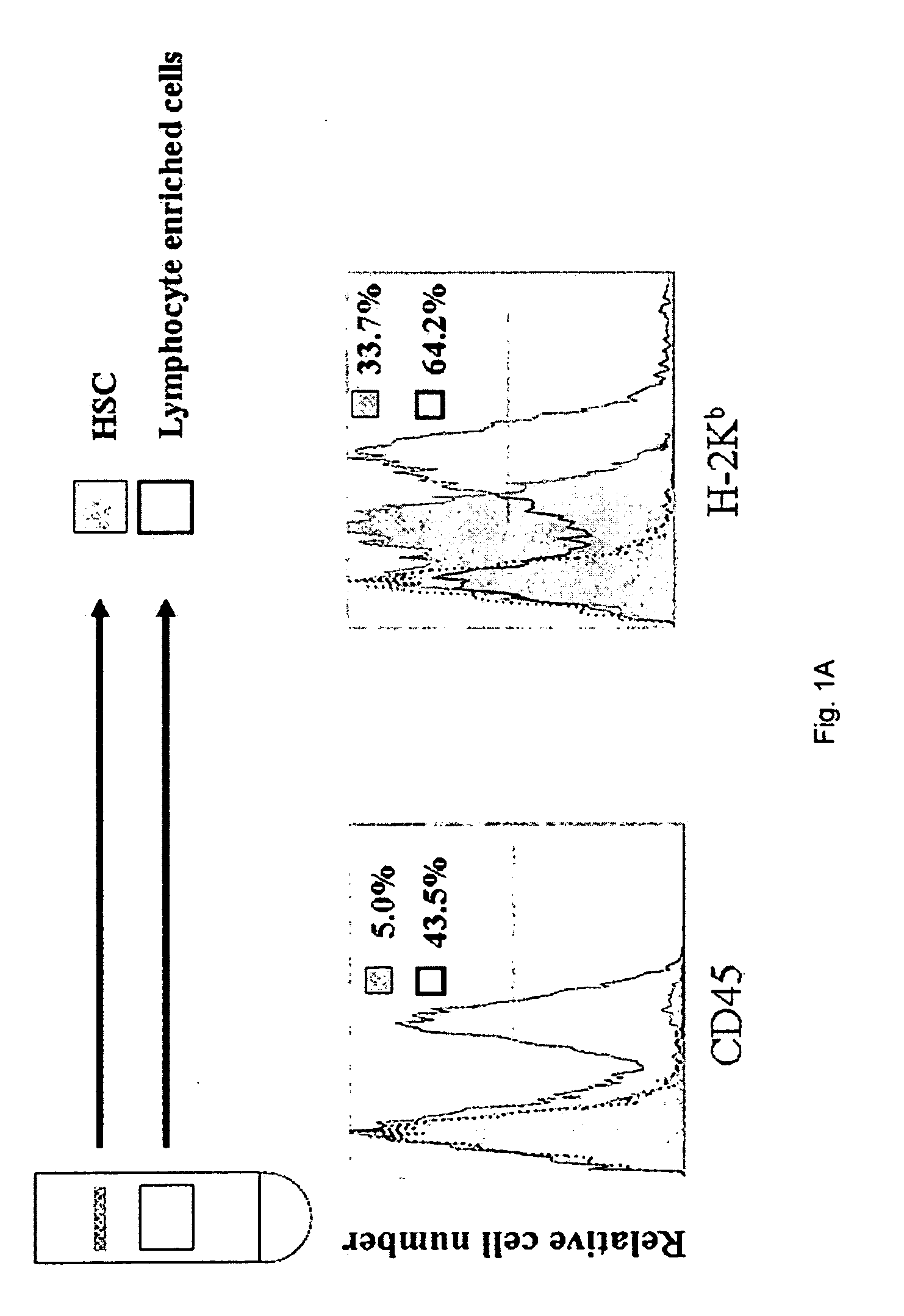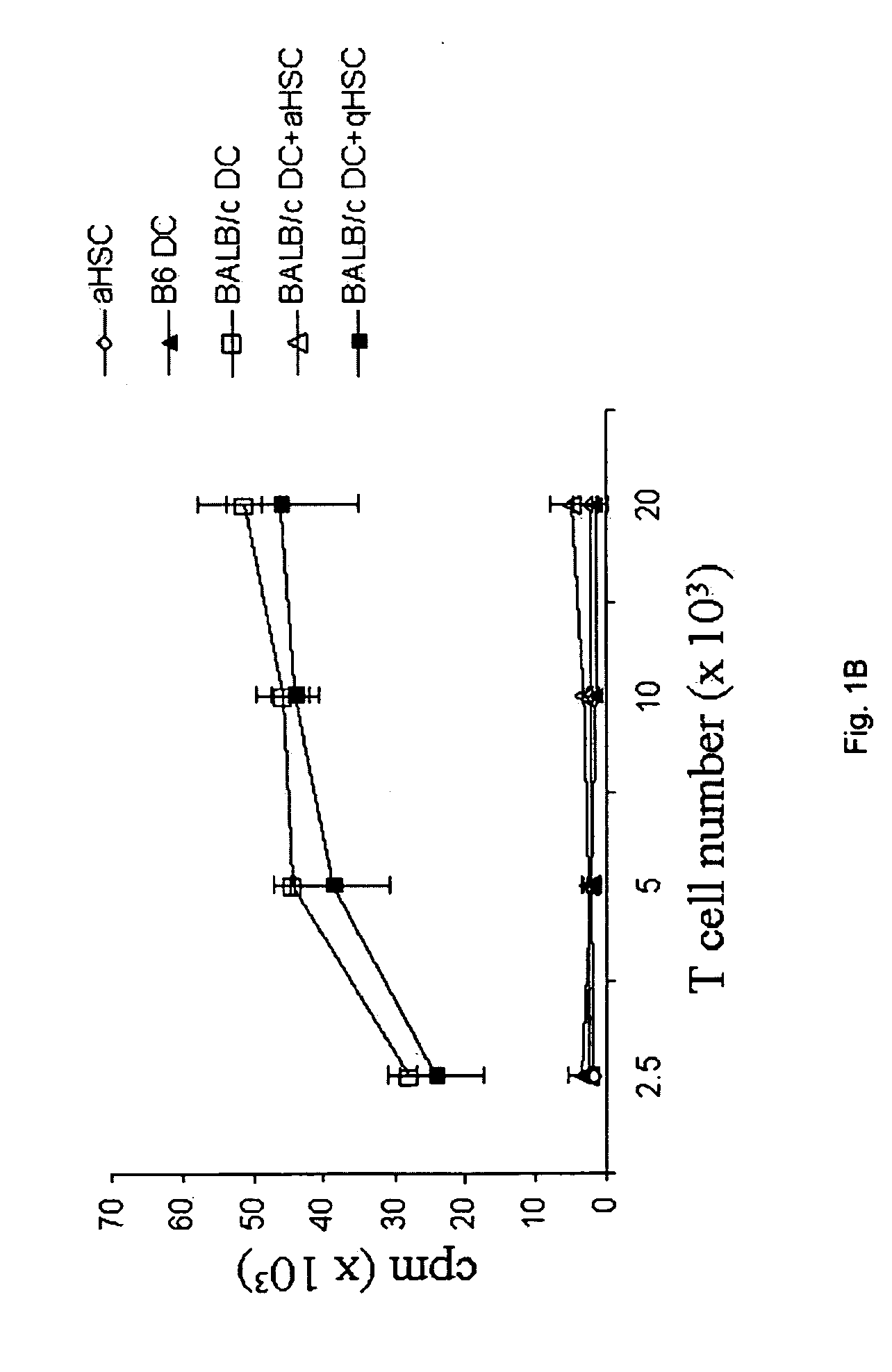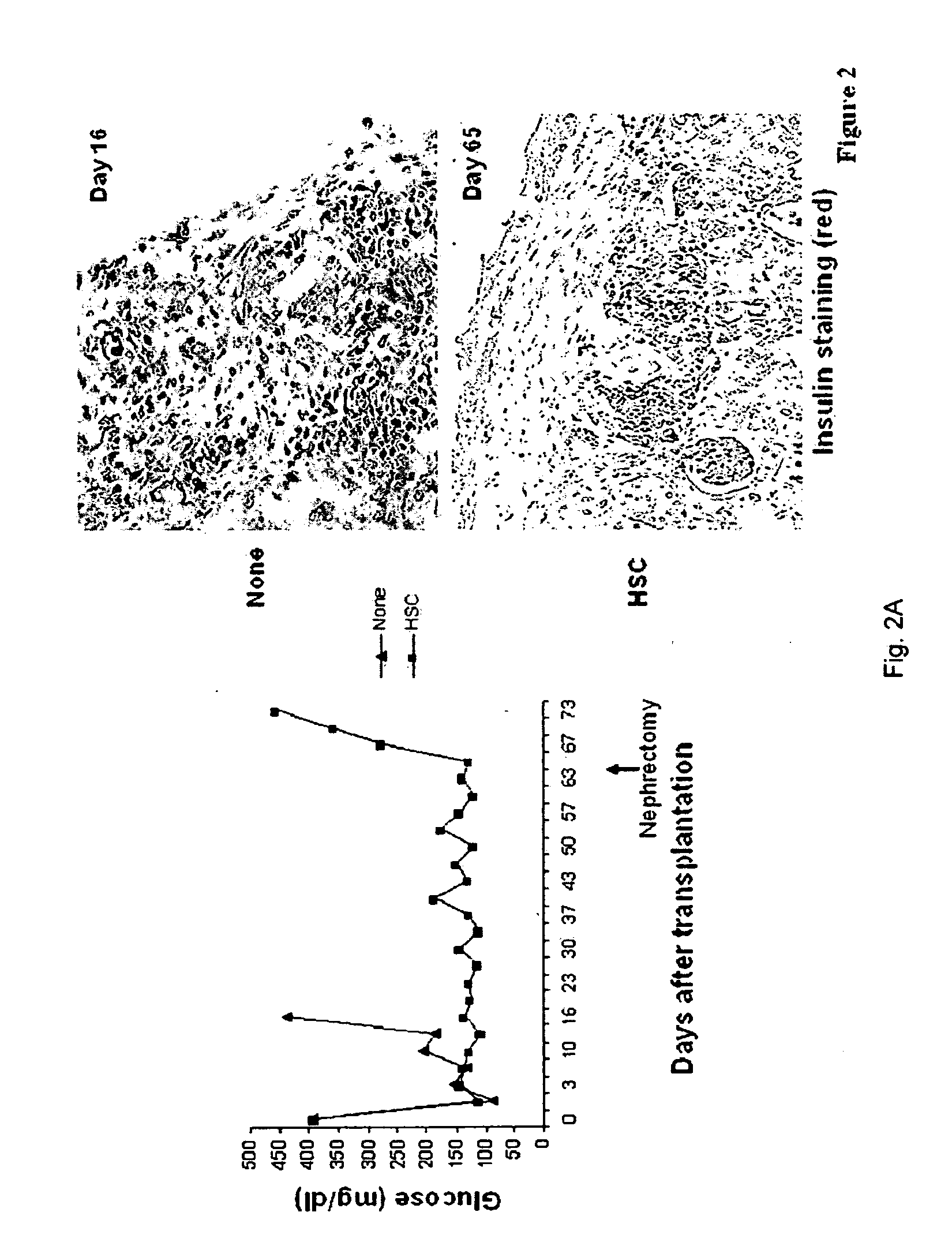Co-transplantation of hepatic stellate cells and graft
a technology of hepatic stellate cells and co-transplantation, which is applied in the field of co-transplantation of hepatic stellate cells and grafts, can solve the problems of inability to produce proteins or hormones necessary, transplants are often rejected by the body, and scientists have tried to treat with organ and/or cellular transplants but have had very limited success. to prevent graft rejection
- Summary
- Abstract
- Description
- Claims
- Application Information
AI Technical Summary
Benefits of technology
Problems solved by technology
Method used
Image
Examples
example 1
Materials and Methods
Animals
[0037]Male C57BL / 6 (B6; H2″), C3H(H2k), BALB / c (H2d), B10.BR(H2k) and EGFP transgenic mice [C57BL / 6-TgN(ACTbEGFP) 10sb, H2b] were purchased from the Jackson Laboratory (Bar Harbor, Me.). B6. B7-H-1 KO mice were kindly provided by Dr. Lieping Chen at Johns Hopkins University Medical School, Baltimore, Mass. All animals were maintained in the specific pathogen-free facility of the University of Pittsburgh Medical Center (Pittsburgh, Pa.) and provided with Purina rodent chow (Ralston Purina, St. Louis, Mo.) and tap water ad libiturn and used at 8-10 weeks of age following the guidelines (NIH publication 86-23 revised 1985).
Preparation of HSCs
[0038]HSCs were isolated from mouse liver nonparenchymal cells (NPC) as previously described in Freidman et al. N Engl J Med 328:1828-1835 (1993), with some modifications, see Yu et al., Hepatology 40:1312-1321 (2004). The isolated HSCs were cultured at a density of 105 / ml in cell culture flask (25 cm2 surface area) (Nun...
example 2
[0060]In this study, we examined the immunoregulatory effect of HSC in vivo using an islet allograft transplantation model, and studied their effect on enhancing revascularization in islet grafts.
Materials and Methods
Animals
[0061]Male C57BL / 6 (B6; H2b) and BALB / c (H2d) mice were purchased from Jackson Laboratory (Bar Harbor, Me.). All animals were maintained in the specific pathogen-free facility of Lerner Research Institute in Cleveland Clinic Foundation, provided with Purina Rodent Chow (Ralston Purina, St. Louis, Mo.) and tap water ad libitum for the duration of the experiment, and were used at 8-12 weeks of age.
Isolation and Culture of HSC
[0062]HSC were isolated from mouse livers as described. Briefly, the liver was perfused via the subhepatic vena cava with 20 mL Ca2+-Mg2+-free Hank's balanced salt solution (Mediatech, Herndon, Va.; 5 mL / min), followed by perfusion with 1 mL collagenase IV (1 mg / mL, Sigma, St. Louis, Mo.). The liver was removed, meshed, and agitated in collagen...
PUM
 Login to View More
Login to View More Abstract
Description
Claims
Application Information
 Login to View More
Login to View More - R&D
- Intellectual Property
- Life Sciences
- Materials
- Tech Scout
- Unparalleled Data Quality
- Higher Quality Content
- 60% Fewer Hallucinations
Browse by: Latest US Patents, China's latest patents, Technical Efficacy Thesaurus, Application Domain, Technology Topic, Popular Technical Reports.
© 2025 PatSnap. All rights reserved.Legal|Privacy policy|Modern Slavery Act Transparency Statement|Sitemap|About US| Contact US: help@patsnap.com



